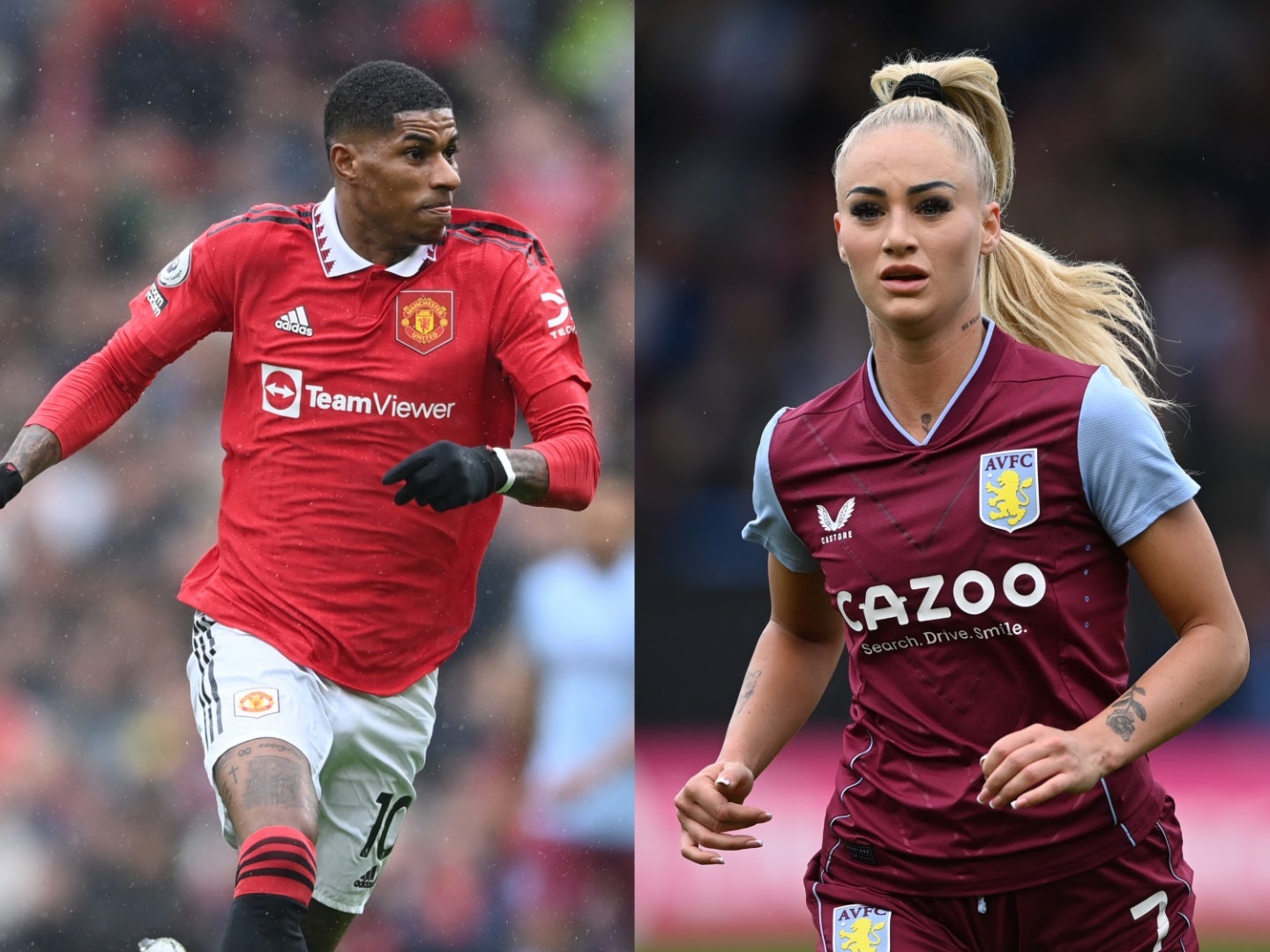Why is Marcus Rashford having to ‘step in and rescue’ one of the world’s most famous footballers?
Focusing on Alisha Lehmann’s looks in the aftermath of the incident is part of the problem


Your support helps us to tell the story
From reproductive rights to climate change to Big Tech, The Independent is on the ground when the story is developing. Whether it's investigating the financials of Elon Musk's pro-Trump PAC or producing our latest documentary, 'The A Word', which shines a light on the American women fighting for reproductive rights, we know how important it is to parse out the facts from the messaging.
At such a critical moment in US history, we need reporters on the ground. Your donation allows us to keep sending journalists to speak to both sides of the story.
The Independent is trusted by Americans across the entire political spectrum. And unlike many other quality news outlets, we choose not to lock Americans out of our reporting and analysis with paywalls. We believe quality journalism should be available to everyone, paid for by those who can afford it.
Your support makes all the difference.You might have seen headlines over the weekend about Aston Villa’s Alisha Lehmann, who was out celebrating in Manchester with friends when she had to be “rescued from a mob” of men (by Marcus Rashford, nonetheless). Some of the resulting coverage in the tabloids focused on Lehmann as “one of the world’s sexiest footballers”.
The salacious headlines are symptomatic of the issue and, it seems to me, are rooted in sexism. Clearly, Rashford stepping in should never have had to happen in the first place.
But focusing on her looks in the aftermath of the incident is part of the problem. Rather than delving into why the “mob” felt emboldened to treat her in such a way, we were reminded of her physical appearance. It’s achingly disappointing. I’m sure male footballers are “mobbed” by fans too – but far less is written about what they look like.
This focus on female players’ looks is damaging, not only to those who are subjected to it, but to the sport as a whole. It detracts from the hard work and dedication the players put into their sport. When female athletes are judged primarily on their looks and personal lives, it sends the message that their athletic achievements are secondary.
It also feels entirely out of step with fans’ attitudes towards the game, and indeed women’s sport more widely.
In the last week alone, we have seen a packed out Emirates Stadium as fans gathered to watch the Women’s Champions League semi-final between Arsenal and Wolfsburg. More than 60,000 fans attended, creating an electric atmosphere that is becoming increasingly common across the women’s game as fans pack out stadiums and terraces alike.
It came off the back of last year’s UEFA Women’s Euros, which felt like a watershed moment for the sport. The Lionesses inspired a new generation of fans, women and men, young and old. It went beyond those that already loved football too, which felt like a true sign of how the public were embracing the women’s national squad in the same way they would with the men’s. I can’t count the number of conversations I’ve had with people who ordinarily didn’t follow football, but do now, having been swept up in Euros fever.
As they raced to the final, eventually taking the trophy, media coverage did focus largely on the teams’ performance – not their looks. Who can forget the enormous coverage of Alessia Russo’s stunning backheel goal, for example?
Coverage also rightly called attention to the disparity between men’s and women’s top-flight football, from funding to sponsorship and participation. These conversations, though not focused solely on performance, are still important. It gets us talking about the barriers that have previously plagued the game and solutions for overcoming them, from equal pay to getting more high-quality sponsors involved with clubs.
More recently, we’ve seen some coverage on the potential causes of career-halting ACL injuries in the game. It’s an area that should be getting more attention, given female players are apparently up to six times more likely to suffer an ACL injury than men. These are the conversations that I, and my fellow fans, are interested in – not the personal lives and appearance of players.
This embrace of women’s football is happening in other sports too. At the weekend we saw England clinch the Six Nations trophy at Twickenham in front of 58,000 fans. It felt like a milestone for the sport, with last years’ home record attendance at 16,000. Fans are turning out in their droves to enjoy matches, and it’s exciting that so many new fans can finally access the major stadiums for stand-alone events that aren’t part of a double bill.
So, it is clear that there is an incredible amount of positive change around women-led sport at this moment, from evolving attitudes to sky-rocketing attendance figures. Which is why this incident feels like a step back: taking a story where a player has been on the receiving end of unwanted attention and linking it to her being one of the “sexiest” footballers.
While it’s understandable that the personal lives of public figures will attract media attention, it’s important that this attention doesn’t cross the line into objectification. With the FIFA Women’s World Cup around the corner, we are on the cusp of another watershed moment for the game. Let’s give the tournament and its players the attention and focus it deserves: on performance and breaking down barriers, not physical appearances.
Sophie Hind is an advocate for women in sport and managing director at Voiceworks Sport
Join our commenting forum
Join thought-provoking conversations, follow other Independent readers and see their replies
Comments